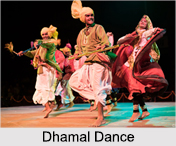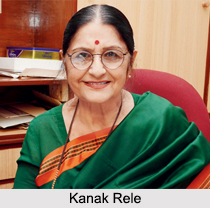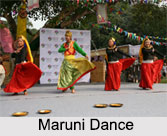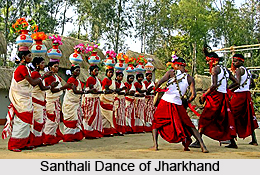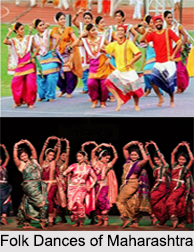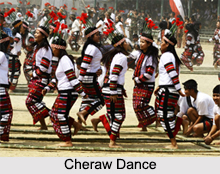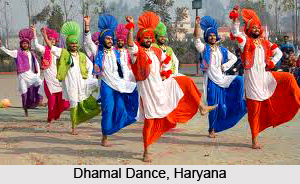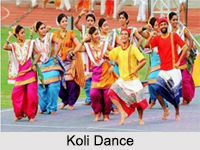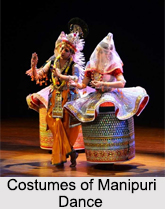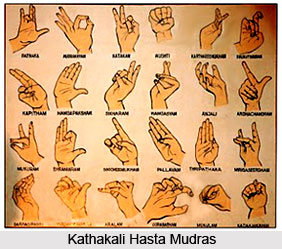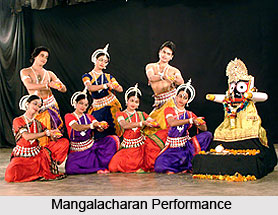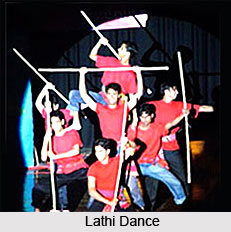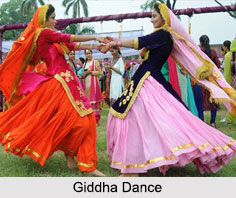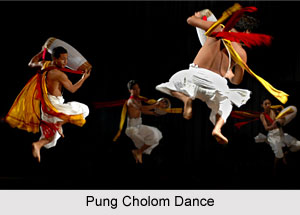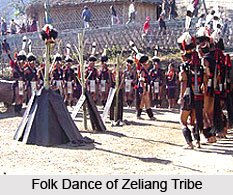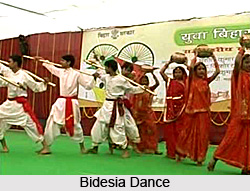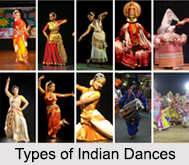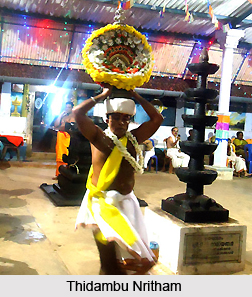 Thidambu Nritham, is a typical Indian dance form performed with a replica of a deity, in the temples of the region of North Malabar. It is generally performed by the Namboothiris, and by other odd Brahmin communities which include Havyaka, Shivalli and Karhade. Thidambu Nritham is a rich culture in the North Malabar region, which is renowned for its indigenous culture and traditions. As the name depicts, Thidambu Nritham is a graceful dance form performed by carrying the embellished image of the `thidambu` or deity on the head of the dancer.
Thidambu Nritham, is a typical Indian dance form performed with a replica of a deity, in the temples of the region of North Malabar. It is generally performed by the Namboothiris, and by other odd Brahmin communities which include Havyaka, Shivalli and Karhade. Thidambu Nritham is a rich culture in the North Malabar region, which is renowned for its indigenous culture and traditions. As the name depicts, Thidambu Nritham is a graceful dance form performed by carrying the embellished image of the `thidambu` or deity on the head of the dancer.
History of Thidambu Nritham
The art of Thidambu Nritham is over 600-700 years old and abides by the principle of dance which has been asserted in Natyashastra. The actual date on which Thidambu Nritham originated cannot actually be ascertained. As per the accounts laid down by some legends, it is believed that Tulu Brahmins, who had moved to the area of North Malabar were responsible for introducing this unique dance form from Karnataka. This dance was termed as `Darsana Bali` in the southern Indian State of Karnataka. The replicas are actually made of bamboo that had intricate design and beautiful frame. After presenting the dance, the performers come out of the Sanctorum clad in conventional attire, standing under the flag and holding the replica aloft on his head. The replica weighs around 10 kg.
However, there exists yet another legendary tale which reveals that once a Namboothiri who had sores all over his body, sat in meditation under a nux vomica tree (Botanical name: Stricnos nuxvomica; Mal. - `Kaanjiram`). Occasionally when fruits fell on his body, it caused excruciating pain, and in agony and anguish he cursed the tree saying that the tree would not bear any fruit anymore. From that time onwards, the tree bears no fruit. During the dance festival of Thidambu Nritham the priests keep the idols of the deities inside a tiny `Mandapam` placed under the tree. Devotees offer prayers at this very site.
Elements of Thidambu Nritham
This dance form is mainly performed by the Namboothiris, high class Hindus. This form of art is followed both outside and inside the temple premises. For staging this dance form there is a need for ten people, and the dancer performs this dance carrying the idol of the deity on his head. Here the footwork is extremely crucial and must be carried out to the beats of the drums.
Costumes of Thidambu Nritham
While performing this dance form, the dancers wear a striking costume. It is mainly a skirt of pleated cloth, earrings, silk vest, bangles, necklaces and nicely decorated turbans known as `ushnipeetam`. There are many stages in which the performance unfolds which are referred to as `Urayal`, summoning the deity Pamchan, Thakiladi adantha and others. A group of artists always accompany the Thidambu Nritham dancer. Five of these artists play percussion instruments while the remaining two dancers carry lamps.
Performance of Thidambu Nritham
The Thidambu Nritham dance form begins with drumming in diverse rhythm also called `Kotti Urayikkal` that would tempt the performers and viewers in equal respect. The dancers perform the dance with the beats of the drums holding the `Thidambu` aloft on their head, thereby imparting a spiritual ambience. This dance form has undergone a sea change with the passage of time keeping the basic structure the same. There are slight modifications that took place in its `Thaalam`, which has lent a unique variety and appeal to this particular dance form. The dancers are not permitted to use emotional expressions while performing this dance. However, `Kootippiriyal` or the parting of Balarama and Lord Krishna is an exception to this rule. Audience can relate to the characters of this touching dance performance and tears fill their eyes. The dance deals with the story of how Lord Krishna used to chase the milkman while Balarama retreated to his residence which was located nearby.
One of the well-known legends woven around the Thitambu Nritham of Trichambaram is the story of a devoted follower of Lord Krishna, named Namboothiri. It is said that Namboothiri used to be a regular visitor to the temple, praying to Lord Krishna and seeking His blessings. Gradually, Namboothiri grew old, and due to the infirmities of old age, discovered that he could no longer walk up to the temple to offer his prayers. The temple was situated at a distance of nearly half a kilometre from his home. Feeling helpless at his physical disability he prayed for forgiveness as he could not walk up the distance. According to this legend, Lord Krishna, along with Balarama approached his home that night and performed a dance known as `Pookkottu Nada`, outside the home of Namboothiri. Namboothiri was amazed when he caught sight of this miraculous incident. The celebrated festival at Trichambaram held from 22nd Kumbham to 6th Meenam (middle of March) portrays this particular event. During this dance, replicas of the deities are carried by the `Melsaanthis` of Mazhoor and Trichambaram are held aloft by the dancers who dance to the beats of some percussion instruments.
